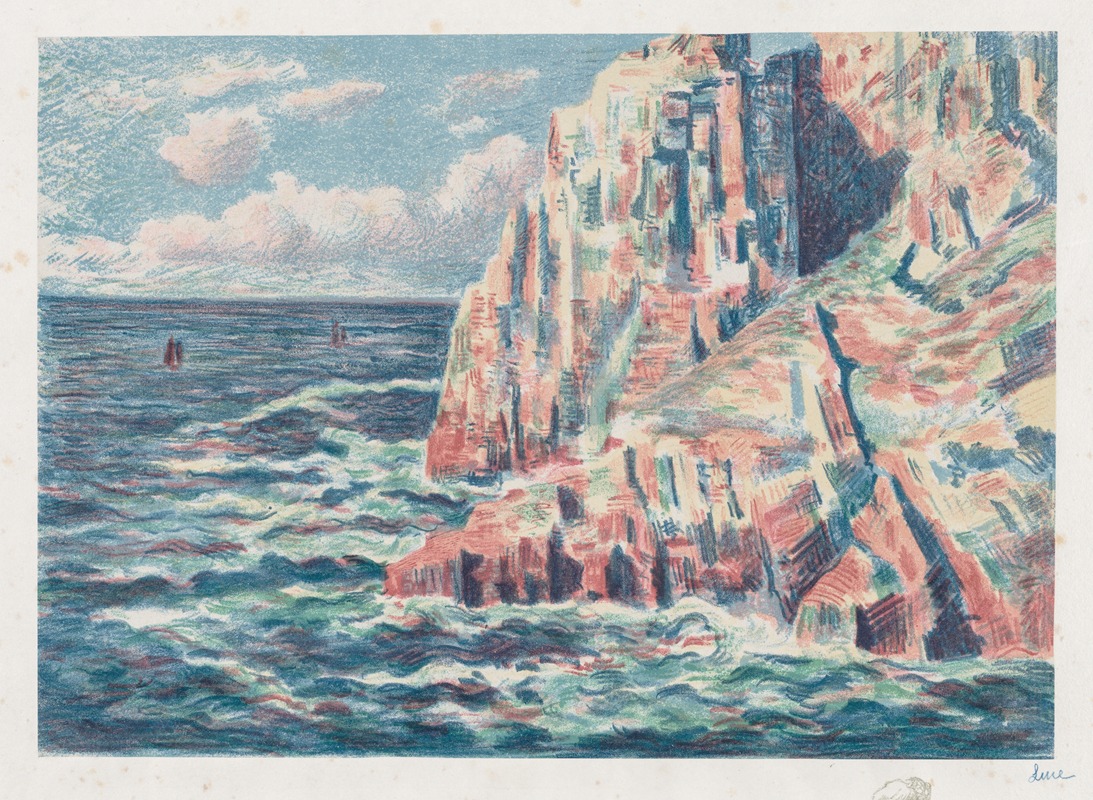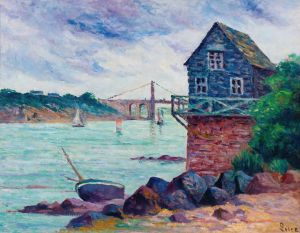
The Sea at Camaret, The Red Rocks
A hand-painted replica of Maximilien Luce’s masterpiece The Sea at Camaret, The Red Rocks, meticulously crafted by professional artists to capture the true essence of the original. Each piece is created with museum-quality canvas and rare mineral pigments, carefully painted by experienced artists with delicate brushstrokes and rich, layered colors to perfectly recreate the texture of the original artwork. Unlike machine-printed reproductions, this hand-painted version brings the painting to life, infused with the artist’s emotions and skill in every stroke. Whether for personal collection or home decoration, it instantly elevates the artistic atmosphere of any space.
Maximilien Luce was a French Neo-Impressionist artist known for his contributions to the Pointillist movement, which was characterized by the use of small, distinct dots of color applied in patterns to form an image. Born in Paris on March 13, 1858, Luce initially trained as an engraver before turning to painting. He became associated with the Neo-Impressionists, a group that included Georges Seurat and Paul Signac, and was known for his vibrant use of color and light.
"The Sea at Camaret, The Red Rocks" is one of Luce's notable works, showcasing his mastery of the Neo-Impressionist technique. The painting captures a coastal scene at Camaret-sur-Mer, a commune in the Finistère department of Brittany in northwestern France. This area is known for its rugged coastline and striking natural beauty, which has inspired many artists over the years.
In this painting, Luce employs the Pointillist technique to depict the dynamic interaction between the sea and the rocky coastline. The use of small, precise brushstrokes allows him to convey the shimmering effects of light on the water and the vibrant hues of the red rocks. The composition is carefully balanced, with the rocks in the foreground providing a strong visual anchor, while the sea and sky create a sense of depth and movement.
Luce's choice of Camaret-sur-Mer as a subject reflects his interest in capturing the natural beauty of the French landscape. During his career, he traveled extensively throughout France, painting scenes that depicted both urban and rural life. His works often convey a sense of tranquility and harmony, achieved through his meticulous attention to detail and his innovative use of color.
"The Sea at Camaret, The Red Rocks" exemplifies Luce's ability to blend technical precision with artistic expression. The painting's vibrant palette and dynamic composition demonstrate his commitment to the principles of Neo-Impressionism, while also highlighting his unique artistic vision. Luce's work was well-received during his lifetime, and he exhibited regularly at the Salon des Indépendants, an annual exhibition in Paris that showcased the works of avant-garde artists.
Throughout his career, Luce remained dedicated to the ideals of social justice and equality, which were reflected in both his art and his personal life. He was an active member of the anarchist movement in France and used his art to express his political beliefs. Despite the challenges he faced due to his political affiliations, Luce continued to produce art that celebrated the beauty of the world around him.
Today, Maximilien Luce is remembered as a key figure in the Neo-Impressionist movement, and his works continue to be celebrated for their technical brilliance and emotional depth. "The Sea at Camaret, The Red Rocks" stands as a testament to his skill as a painter and his ability to capture the essence of the natural world through the lens of Neo-Impressionism.
















